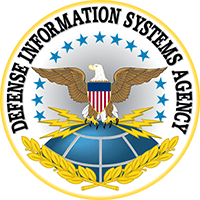Modern systems demand modern analysts.
Analysts with dated skills don’t slow projects - they get removed from them.
Enroll Today! This special $695 tuition won’t last.
Master mapping and analysis methods used by high-performing organizations and apply them immediately.
Establish a common framework and equip your team with consistent business analysis best practices across the organization.
Leverage team training to accelerate current and upcoming projects.
|
300,000+
Professionals trained
|
14
PDUs / CDUs
|
4.8★
Average participant rating
|
Fortune 500
Trusted by global brands
|
Curriculum at a glanceSection 1 — Framework and Key ConceptsIntroduces core analysis concepts, clarifies common myths, contrasts analysis depth levels, distinguishes business and system requirements, and establishes essential guiding questions supported by systems-thinking principles. Section 2 — Defining Baseline RequirementsDefining business functions and work activities, introduces five requirement types, models actors and interactions, and explains how to structure clear, effective use cases for baseline requirements. Section 3 — Analyzing and Extending RequirementsExpand baseline requirements by mapping interaction flows, analyzing break-fix scenarios, identifying decision and rule logic, and refining non-functional needs to ensure completeness and accuracy. Section 4 — Defining Information RequirementsEstablish a shared business vocabulary, structures entities and relationships, introduces ERD fundamentals, and defines data quality attributes critical to accurate, reliable business information. Section 5 — Extending Information RequirementsExtends information requirements through state analysis and diagrams, identifies reporting and analytics needs, and defines data integration requirements across systems and workflows. Section 6 — BSA at Scale Case StudyAnalyze a complex real-world business domain to identify requirements, apply course modeling techniques, and use a structured template to enhance enterprise-level business systems analysis. Section 7 — Elicitation and CollaborationFocus on elevating conversation quality, engaging SMEs and other stakeholders, sourcing business knowledge, facilitating workshops, and managing alignment and conflict throughout analysis efforts. Section 8 — Practical GuidancePractical advice on using maps and models, scaling analysis work, applying critical success factors, and balancing intuitive “vibe code” with structured professional analysis practices. |
Using intuitive models, best-practice methods, and real-world scenarios, you and your team learn to rapidly uncover deep operational insight and translate it into precise user stories, use cases, and SRS specifications. The result is smarter solution design, faster delivery, fewer defects, and systems that truly support the business. Mastering modern analysis enables teams to bridge business vision and system execution - reducing rework, lowering risk, and delivering value at scale.
|
|
|
Results our learners reportTrusted by professionals and teams at leading organizations
|
|||
|
|
|












